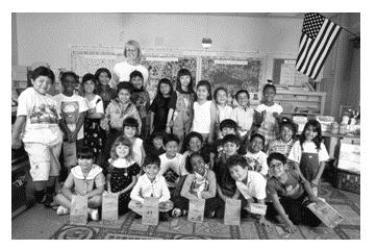In a research study on false memories, psychologist Stephen Lindsay showed half the participants their actual first-gradeclass photo, like the one shown here, and asked them to read adescription of a prank that supposedly happened in firstgrade. What was the effect of looking at the photo? 
A) The rate of false memories was same regardless of whether participants looked at their first-grade photo or not.
B) Looking at the photo greatly reduced the likelihood of producing a false memory.
C) Looking at the photo greatly increased the likelihood of producing a false memory.
D) Participants who did not look at the photo were much more likely to produce false memories than those who looked at the photo.
Correct Answer:
Verified
Q15: As you are reading this question right
Q16: Q17: Information is stored in short-term memory for Q18: What principle is depicted in the graph? Q20: Participants waited briefly in a psychology professor's Q21: According to George Miller, the capacity of Q23: The "phonological loop," "visuospatial sketchpad," and"central executive" Q24: Jamie found the ISBN of the book Q257: Memory is formally defined as: Q298: British psychologist and memory researcher Alan Baddeley![]()
A) the mental
Unlock this Answer For Free Now!
View this answer and more for free by performing one of the following actions

Scan the QR code to install the App and get 2 free unlocks

Unlock quizzes for free by uploading documents